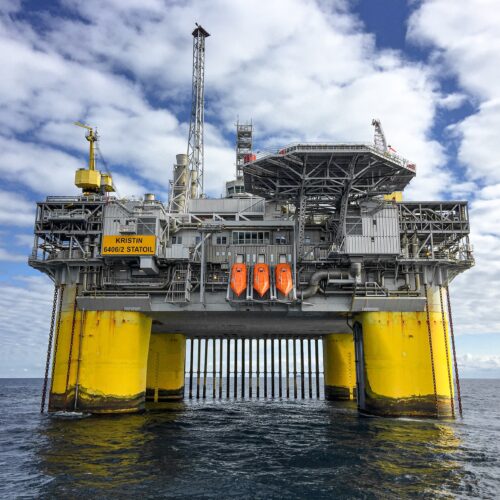Cross-sector collaboration between public organizations, private companies, and other types of entities is becoming increasingly common in a complex world. Interreg is a part of the EU’s development programs, where many collaborative projects are organized and funded. For Norway, a significant number of these projects are related to cross-border regional relations between Norway and Sweden.

Such projects fall under the category of inter-organizational projects (I-O projects) involving multiple organizations as clients and project owners. These projects also require networking and management with many stakeholders involved.
One such project is the Maritime Border Forum Skagerrak (MGS). On the project’s website, they have written the following:
The aim of the project is to promote increased and sustainable business development in the Skagerrak region. This will be achieved through collaboration among companies, marine management, research, and academia in the cross-border region. There is significant potential to develop more sustainable businesses that utilize the resources offered by the sea. The project will work with small and medium-sized, as well as newly established marine businesses, to strengthen their development and growth.
The project is organized under an association called the “Svinesund Committee” (SvKo), a political cooperation initiative consisting of municipalities located near the Svinesund Bridge in Norway and Sweden, as well as Viken County Council and Vastra Götaland Region.
SvKo has the role of the lead partner, and the committee’s leader also serves as the project owner. At the same time, Viken County Council, Gothenburg University, and the County Administrative Board are listed as project owners. A steering group comprises members from various municipalities and collaborators. The project management itself consists of a separate group of individuals from the project owners who actively work on the project. The project is funded with approximately half of the funds coming from Interreg and the other half from public actors (municipalities, county councils). The total budget for both the Norwegian and Swedish sides is approximately 2 million euros.
With many stakeholders involved in achieving benefits for businesses and promoting more sustainable solutions in the Skagerrak maritime area, the organization may appear somewhat complex when viewed through a project lens. It seems that the project, at least from the Norwegian side through Viken County Council, is not part of a strategic portfolio management. While the project and the involved parties have experience and routines for handling financial control and management, there may not be a high level of project management expertise.
For the I-O project to achieve the desired effects and contribute to value creation, several factors must be in place. With the limited information available, you are asked to present some professional aspects and provide descriptions and professional assessments related to the appropriate alignment of this type of projects.
First, you need to explain what the I-O project is, why they are often established, and what intentions they are meant to serve.
I-O projects, or inter-organizational projects, are projects that involve collaboration and cooperation between various organizations, whether they are public organizations, private companies, academic institutions, or other types of entities. These projects are typically established to address complex and challenging issues that cannot be solved by a single organization alone. The goal of I-O projects is to leverage the different organizations’ complementary resources, expertise, and perspectives to achieve common objectives.
The purposes of I-O projects can vary depending on the project’s nature and the participants’ objectives, but some of the most common intentions are as follows:
- Leveraging synergies: The project aims to achieve increased efficiency, innovation, and value creation by pooling resources and expertise from multiple organizations.
- Sharing risks and costs: Participating organizations can reduce risks and costs by collaborating on joint projects that would otherwise be too demanding or expensive to carry out individually.
- Increasing knowledge exchange and learning: Through collaboration and sharing of knowledge and experiences, I-O projects can help expand and strengthen the participants’ expertise and capabilities.
- Creating mutual benefits and solutions: The project aims to create mutual benefits for the participants, such as increased competitiveness, improved services, or solutions to shared societal challenges.
Next, based on the available information here, you are to provide a description of the organization and responsibilities in this project. Feel free to offer some professional input on the appropriate organization of this type of project and key aspects to consider.
Based on the available information, we can describe the organization and responsibilities in the Maritime Border Forum Skagerrak project as follows:
- Svinesund Committee (SvKo): SvKo is a political cooperation initiative consisting of municipalities located near the Svinesund Bridge in Norway and Sweden, as well as Viken County Council and Västra Götaland Region. SvKo has the role of the lead partner and project leader.
- Project Owners: Viken County Council, Gothenburg University, and the County Administrative Board are listed as project owners along with SvKo. This indicates that these organizations have an ownership role and responsibility for the project’s implementation.
- Steering Group: The steering group consists of members from various municipalities and collaborators. This body likely has an advisory role and is involved in decisions and guidance related to the project’s direction and progress.
- Project Management: There is a separate group of individuals from the project owners actively working on the project and taking responsibility for project management. These individuals likely oversee coordination, implementation, and monitoring of project activities.
For appropriate organization of this type of I-O projects and key aspects to consider, the following professional input may be relevant:
- Clear role definition and responsibility allocation: It is essential to have clearly defined roles and well-distributed responsibilities among the project participants. This ensures effective collaboration, coordination, and communication.
- Establishing effective collaboration structures: Developing efficient collaboration structures, such as establishing steering groups, project management groups, and working groups, can help ensure effective governance, decision-making, and coordination between the organizations.
- Clear communication and knowledge sharing: Establishing effective communication channels and routines for knowledge sharing is crucial in I-O projects. This promotes collaboration and contributes to efficient information flow and learning between the organizations.
- Common goals and shared understanding: It is important to establish common goals and a shared understanding of the project’s purpose and expectations among the participants. This helps maintain focus and motivation throughout the project’s duration.
- Project management and expertise: Having sufficient project management competence and experience among the project leadership and participants is crucial. This includes knowledge of project planning, risk management, financial control, and project evaluation.
Consideration should also be given to incorporating strategic portfolio management to ensure that the project aligns with overarching strategic goals and priorities. This will contribute to a more holistic and coordinated approach to the project portfolio and optimize resource utilization.
This case is taken from the book “Verdiskapende Prosjektledelse” – 2022, 2. Edition, by Torgeir Skyttermoen og Anne Live Vaagaasar.




